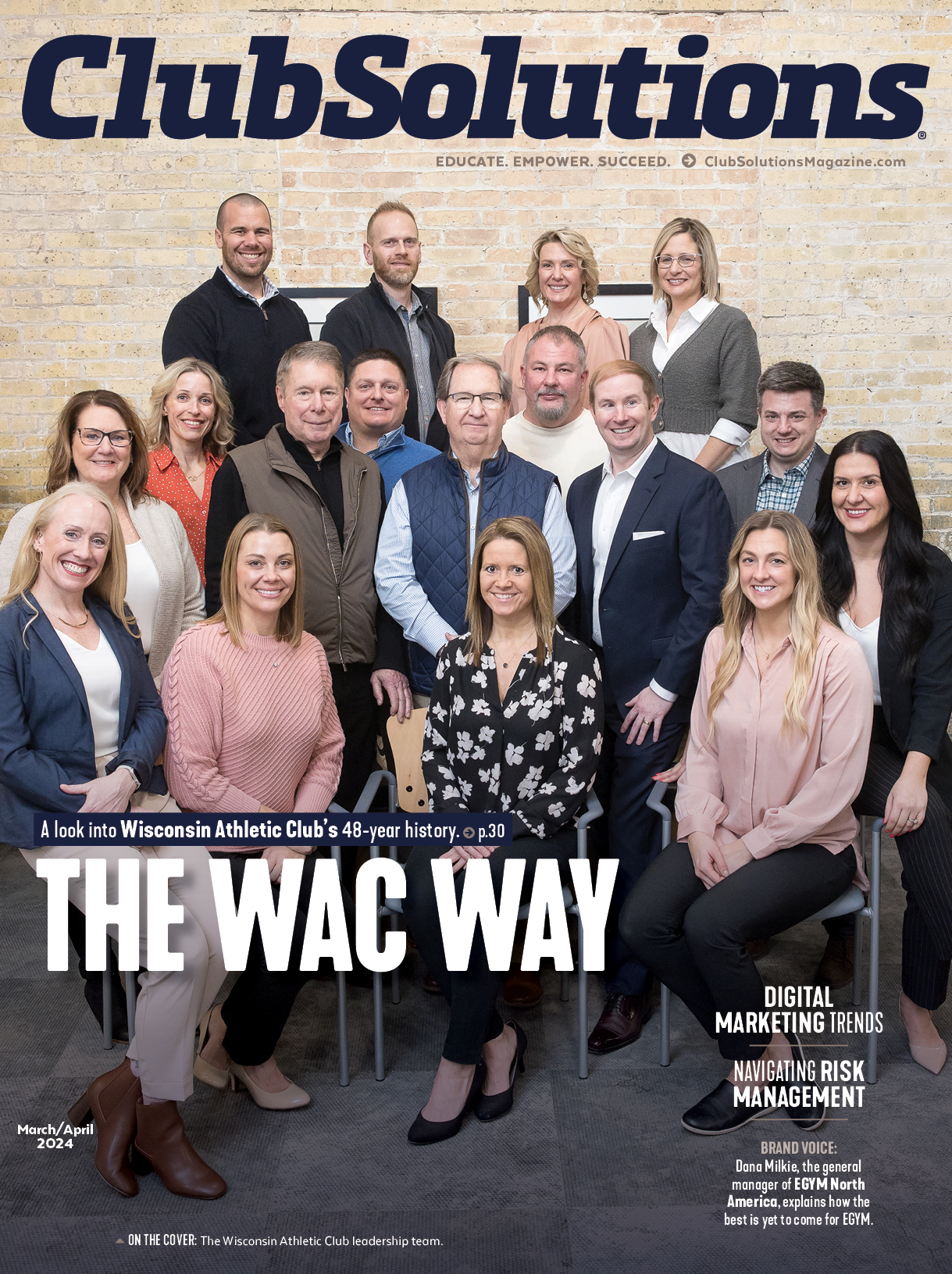The primary focus of any fitness program is to push members to their limits, and help them reach or exceed their own goals.
But with trainers and instructors putting such a heavy emphasis on getting a good burn or deep enough stretch, is it easy to look past basic risk management practices?
According to Dustin Blackwell, the personal training director at Brick Bodies, the answer is yes. “Any program or session can be dangerous if proper execution is not there, or the trainer does not do their due diligence with their clients and participants,” he said. “Once you start to incorporate advanced or complex movements and specialty equipment, especially in higher intensity formats, the level of risk is greatly increased.”
Risk management is just as important in cycling classes and personal training sessions as it is in any other area of your club. To help maintain a safe and enjoyable environment in fitness programming, it’s critical to have the right training protocols and daily procedures in place.
Brick Bodies and East Bank Club — two clubs that boast successful group and personal training formats — understand the importance of fitness program risk management and prioritize it in their daily operations:
Brick Bodies
Long-term risk management practices start with an employee’s onboarding process. The earlier a club teaches good safety practices to a new trainer, the more likely these practices are to stick. Knowing this, Brick Bodies places a lot of emphasis on the first couple weeks of an employee’s time with the company.
“When we onboard our new trainers, we spend 30 hands-on hours covering the essential principles of program design,” said Blackwell. “Once they are interacting with clients, we also have head trainers who review client programming and perform visual session audits to mitigate risk of injury and ensure a positive client experience while reaching their fitness goals.”
Trainers are taught numerous ways to deliver that positive experience through safety practices, including recognizing the signs of a member pushing themselves too hard — changes in facial color, faintness or obvious discomfort, for example — and knowing the correct posture and form of the various exercises and stretches they’ll be guiding clients through.
Blackwell and his team put a lot of time and energy into developing their trainers, helping them improve not only their ability to energetically teach classes, but also their understanding of correct form and the right energy level for clients, depending on their needs and ability.
“With large and small group training, we focus on the continuous education and upskilling of instructors,” explained Blackwell. “We audit classes and sessions to provide feedback and improvement strategies.”
And at Brick Bodies, trainers aren’t solely responsible for the format of programming, especially in the beginning. “We have personnel who are responsible for the quality control of our programming,” said Blackwell. “We also have a team responsible for program design to ensure constant safety and effectiveness.”
All the training and programming happens on the backend, so in the spirit of self-improvement, some direct surveying never hurts. “We also survey our clients and class participants to better understand how we can best service them, and provide an amazing and safe experience every time,” shared Blackwell.
While you can mitigate risk via training and programming, your members play a role as well. There will always be participants who want to push themselves past their limit, but conversations with some of your members might reveal many of them highly value their own safety. An effective way to ensure members’ safety is to educate them on the importance of fitness risk management.
“I find most members are hungry for knowledge and genuinely want to learn how to do things as safely and effectively as possible,” said Blackwell. “The challenge lies in the sheer amount of information — much of it incorrect or out of context — that is available to people today. It is tough for someone without a strong understanding of human physiology to sift through all that content, and determine what the best and safest method for them is.”
Because both trainers and members are bought in to the idea of fitness risk management, Brick Bodies programming has the right balance of high member engagement and minimal risk.
East Bank Club
Education is also extremely important for East Bank Club’s fitness instructors. According to Aida Johnson-Rapp, the club’s director of group exercise, it’s the first step toward mitigating risk in fitness classes.
“In our group exercise classes, the first step for mitigating risk is ensuring all instructors have the training required for the formats they are teaching,” said Johnson-Rapp. “This includes current CPR, general Group X certifications, and specialty certifications for programs like indoor cycling, Pilates and yoga.”
According to Johnson-Rapp, East Bank Club gives trainers the resources they need to stay educated on basic movement principles and safety protocols. “We provide in-house training workshops for leadership, injury prevention, exercise science and more,” she said.
When trainer education is done correctly, staff can mitigate risk by knowing how to account for members with old injuries or conditions that might prevent them from correctly or safely doing an exercise.
To ensure trainers are putting their education into action, Johnson-Rapp and the East Bank Club leadership team give them daily and annual feedback. “We visually monitor classes and workouts on a regular basis,” she said. “We have an extensive feedback system for both members and instructors, and we conduct annual performance reviews for each instructor, in addition to providing those in-house workshops.”
According to Johnson-Rapp, one particular challenge trainers should be prepared for is dealing with a member who is unwilling to budge from the intensity level they believe their workout should be.
“The biggest challenge is getting members to be open to working at their personal fitness level, no matter what they perceive it is, and open to trying new formats for exercise variety and better results,” explained Johnson-Rapp.
Achieving this also involves ensuring members are educated on how to safely exercise. “We provide detailed information in our class descriptions about what participants can expect in each class,” explained Johnson-Rapp. “We also give recommendations for members with contraindications for specific workouts.”
These resources can help members prepare for any exercises or movements that typically give them trouble, or determine what level of intensity should be safe for them.
But trainer and member education isn’t the only step clubs can take to ensure better risk management. Applying basic risk management practices throughout your entire facility should be a daily practice, and this extends to your group exercise spaces.
Checking equipment quality, for example, is an important part of East Bank Club’s safety protocol. “We inventory and replace our Group X class equipment regularly to ensure everything is in good working order,” said Johnson-Rapp.
All in all, hitting fitness goals and mitigating risk don’t have to be mutually exclusive — it just takes some instructor training and member education.











